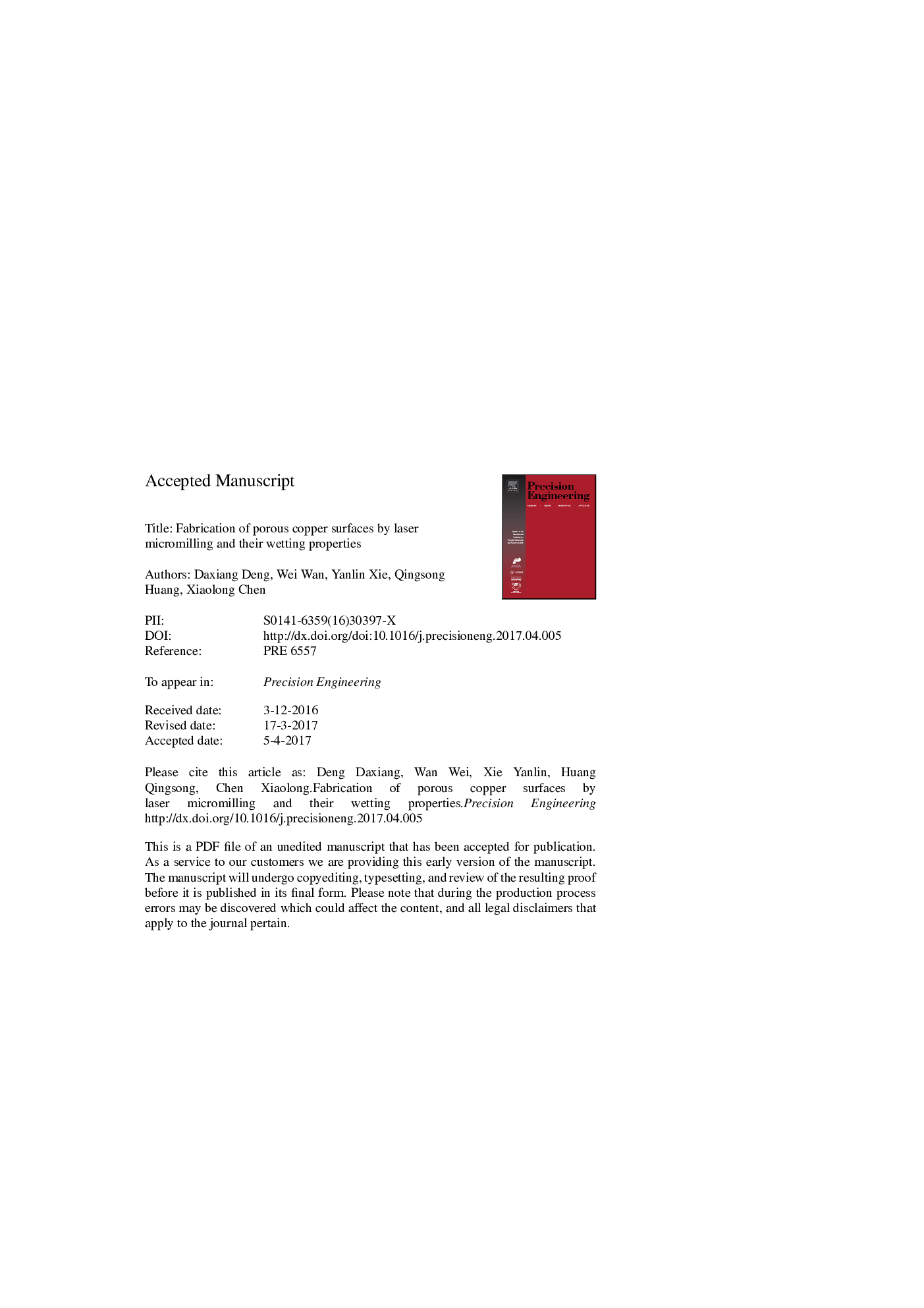| کد مقاله | کد نشریه | سال انتشار | مقاله انگلیسی | نسخه تمام متن |
|---|---|---|---|---|
| 5019120 | 1467839 | 2017 | 14 صفحه PDF | دانلود رایگان |
عنوان انگلیسی مقاله ISI
Fabrication of porous copper surfaces by laser micromilling and their wetting properties
ترجمه فارسی عنوان
تولید سطوح مس متخلخل با میکرولیگل لیزر و خواص ترمیم آنها
دانلود مقاله + سفارش ترجمه
دانلود مقاله ISI انگلیسی
رایگان برای ایرانیان
کلمات کلیدی
موضوعات مرتبط
مهندسی و علوم پایه
سایر رشته های مهندسی
مهندسی صنعتی و تولید
چکیده انگلیسی
Porous copper surfaces show their great merits in the applications of chemical reaction, sound absorption and heat transfer. In this study, a laser micromilling method is proposed to fabricate porous surfaces with homogeneous micro-holes and cavities of the size about 1-15 μm on pure copper plates in a one-step process. The laser micromilling was performed by a pulsed fiber laser via the multiple-pass reciprocating scanning strategy. Based on the measurement of scanning electron microscope (SEM) and 3D laser scanning confocal microscope, the formation of surface structures was investigated together with the laser ablation mechanisms. The effects of laser processing parameters, i.e., laser fluence, scanning speed, number of scanning cycles and scanning interval, on the formation and surface morphology of porous surfaces were systematically assessed. Furthermore, the wettability of the porous copper surfaces was also evaluated by measuring the static contact angle of water. The results showed that the laser fluence played the most significant role on the formation of porous copper surfaces. The average depth and surface roughness of porous copper surfaces increased with increasing the laser fluence and number of scanning cycles while decreased with the increase in scanning interval. The scanning speed played little influence on the formation of porous copper surfaces. These results can be closely related to the variation of energy density and re-melting process during the laser micromilling process. Moreover, all the copper porous surfaces were found to be hydrophobic. The contact angle of porous copper surfaces was significantly dependent on laser fluence, but weakly affected by the scanning speed and number of scanning cycles.
ناشر
Database: Elsevier - ScienceDirect (ساینس دایرکت)
Journal: Precision Engineering - Volume 49, July 2017, Pages 428-439
Journal: Precision Engineering - Volume 49, July 2017, Pages 428-439
نویسندگان
Daxiang Deng, Wei Wan, Yanlin Xie, Qingsong Huang, Xiaolong Chen,
